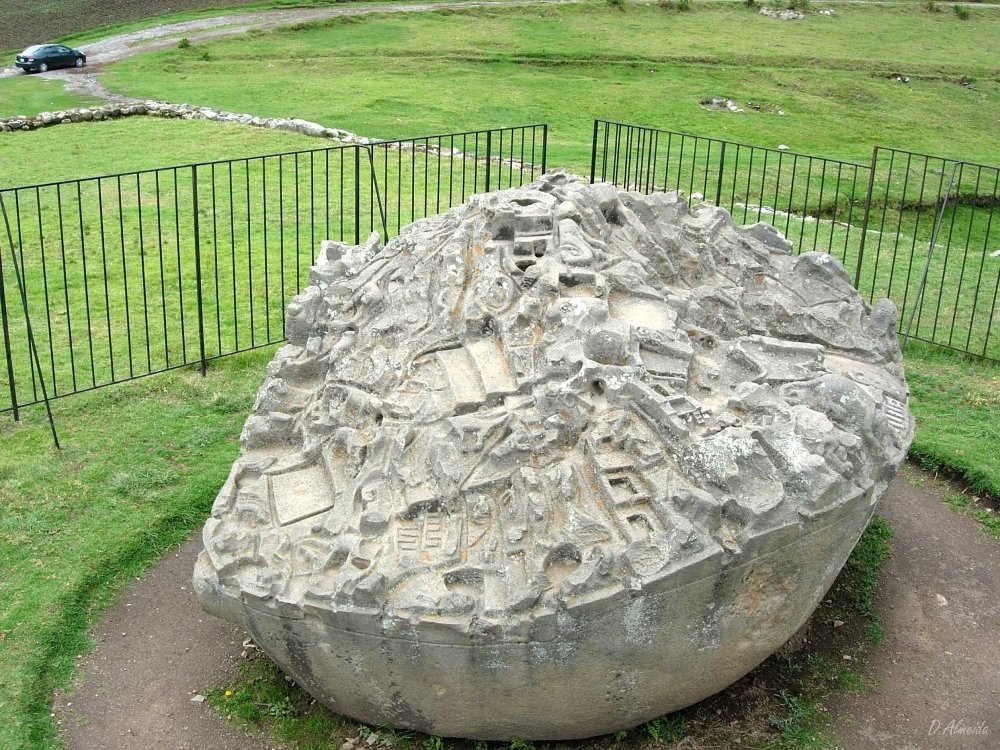Saywite Archaeological Ensemble | Apurímac
The Saywite Archaeological Ensemble is located in the province of Abancay, in the region of Apurimac, Peru. It is located about 47 kilometers northeast of the city of Abancay, the capital of the province. The Saywite archeological site is accessible by road from Abancay, and once in the area, there are roads leading to the specific site where the Saywite Rock and other archeological remains are located.
The altitude of the Saywite Archaeological Complex varies depending on the specific location within the complex, but it is generally at an approximate altitude of around 3,500 meters above sea level.
History of the Saywite Archaeological Ensemble | Apurimac
The Saywite Archaeological Complex, also known as Sawite, has a rich history dating back to pre-Columbian times. It is believed that the site was built by the Wari culture between the 7th and 9th centuries A.D., and later occupied by the Incas.
Wari Culture (700 A.D. – 900 A.D.)
It is presumed that the Wari were the first to settle in Saywite. This culture, known for its expansion and domination of much of Peruvian territory, would have used the site as a ceremonial and administrative center.
Archaeological evidence suggests that the Wari built at Saywite:
- Agricultural terraces: These terrace systems allowed the cultivation of various crops on the slopes of the mountains, optimizing the use of the soil.
- Irrigation canals: The construction of canals was essential for supplying water to crops, especially in an area with a dry climate.
- Administrative buildings: It is presumed that these structures served as residences for the authorities or as storage centers.
- Temple: A ceremonial space where rituals and offerings were made to their gods.
Inca Culture (1400 A.D. – 1532 A.D.)
After the fall of the Wari culture, the site of Saywite was occupied by the Incas. They took advantage of the existing infrastructure and adapted it to their own needs.
The Incas would have built at Saywite:
- Remodeling: It is believed that the Incas modified some Wari structures to give them greater symbolism and functionality according to their cosmovision.
- New constructions: It is likely that the Incas constructed new buildings, such as temples and ceremonial plazas, to reinforce their presence in the area.
- Use as a ceremonial center: Like the Wari, the Incas would have used Saywite as a sacred place to perform rituals and connect with their divinities.
Significance and importance of Saywite
The Saywite Archaeological Complex is a site of great historical and cultural importance. It allows us to better understand the social, economic and religious organization of the cultures that inhabited the region.
The carvings on the monolith are especially significant, as they represent elements of the cosmovision and mythology of the Wari and Inca cultures. These carvings give us clues about their beliefs, values and ritual practices.
Saywite is also a valuable cultural legacy that reminds us of the richness and diversity of Peru’s pre-Columbian civilizations. Its conservation and study are essential to keep our history alive and transmit it to future generations.

How to get to Saywite Archaeological Ensemble?
To get to the Saywite Archaeological Ensemble, you must first get to the city of Abancay, which is the capital of the province of Abancay in the region of Apurimac, Peru.
- Travel to the city of Abancay, capital of the province of Abancay in the region of Apurimac, Peru.
- From Abancay, take ground transportation to the town of Curahuasi. You can use colectivos or cabs, and the trip usually takes about 45 minutes.
- Once in Curahuasi, you can hire a cab or motorcycle cab to get to the Saywite Archaeological Ensemble. The trip from Curahuasi to Saywite usually takes about 30 minutes by vehicle.
- During your visit, enjoy exploring the archaeological site and admire the impressive Saywite Rock and other ancient structures.
- After your visit, return to Curahuasi and from there you can take a shuttle back to Abancay to continue your journey or return to your accommodation.
- Remember to take precautions, bring water and sun protection, and be prepared for the climate and altitude of the Andes region during your visit.
Recommendations for visiting the Saywite Archaeological Site
Here are some recommendations for visiting the Saywite Archaeological Ensemble:
- Planning: Before your visit, find out about opening hours, entrance fees, and any restrictions or special requirements there may be.
- Appropriate clothing and footwear: Wear comfortable clothing suitable for walking and sturdy footwear. The area can be uneven and there may be steep slopes, so be sure to wear shoes suitable for walking.
- Sun protection and insect repellent: The sun at high altitudes in the Andes can be strong, so wear sunscreen and carry insect repellent to protect yourself from mosquitoes.
- Hydration: Take plenty of water with you, especially if you plan to hike a lot. The altitude can increase dehydration, so stay hydrated during your visit.
- Respect for the site: Respect the signs and indications of site personnel. Avoid damaging archaeological structures and do not climb Saywite Rock or other structures.
- Photography and video recording: Ask about photography and video recording policies at the site. Some sites may have restrictions on taking photos or video in certain areas.
- Site interpretation: If possible, consider hiring a local guide or using available informational materials to gain a better understanding of the historical and cultural significance of the Saywite Archaeological Ensemble.
- Garbage collection: Help keep the site clean by picking up your garbage and avoiding leaving trash behind.
By following these recommendations, you will be able to enjoy your visit to Saywite Archaeological Ensemble to the fullest while respecting the site and its surroundings.












